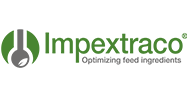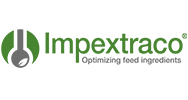
Consumers are the end user of the swine industry. For consumers, pork should always be a healthy, delicious and reliable choice, irrespective of them shopping at a market, visiting a retailer or dining in a restaurant. Much of the flavour, texture and quality of a piece of meat depends on how the animal was kept during its life – and that exactly is going to be the topic of this webinar. We shall zoom into various nutritional strategies how to positively influence pork quality outcome – and we will also spend attention how raising boars can definitely lead to a high and consistent pork quality – with sustainable side-effects as well.
Register here:
Speakers

Dr Ir Gé Backus, Director Connecting Agri & Food,
“Realizing market acceptance for entire male pigs”
- Ending piglet castration long-term and complex process
- Unravelling reactions consumers on meat from non-castrated pigs is crucial
- Product specifications for the market are related to fat quality and boar taint prevalence
- Pork supply chains are better and better equipped to become successful
- Feeding pigs with adjusted diets will often solve fat quality problem. But this will not be enough for systems targeted to dry-cured products.
- Increasing intramuscular fat content by selective breeding or nutrition is advisable and will contribute to alleviate the toughness issue.
- Still some open ends: Potential of available knowledge not fully utilized


Dr Diana-Christin Siebert, Technical Marketing Manager at CJ Bio GmbH
“How amino acids influence pork quality“
It is well known that the use of crystalline amino acids is a prerequisite for performance in diets containing decreased levels of crude protein. However, amino acids not only affect growth, but can manipulate body composition or meat quality. The presentation will evaluate different amino acids including Histidine and their impact on pork meat quality.


Katrien Deschepper, Global Technical Director Impextraco
“Oxidative stress in finishing pigs: challenges and solutions”
Fattening pigs face peak levels of oxidative stress during the last finisher phase, affecting the muscle- and fat tissues just before slaughter. Obviously, this can have a substantial impact on the quality of the meat during storage. The use of a well selected combination of diverse bioactive antioxidants (Elife ®) during this stressful final period has proven to be an effective solution to improve different pork meat quality traits:
- shelf life extension
- drip loss reduction
- increase color stability
- increased tenderness


Vincent ter Beek, Host and Editor Pig Progress

Partners
This webinar is made possible by:




